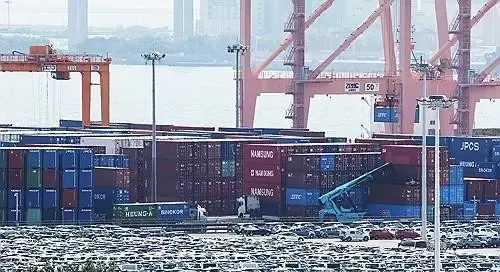Has South Korea's GDP Grown by 1% in Q3?

Synopsis
Key Takeaways
- Estimated GDP growth for Q3: ~1%
- Reviving consumption and strong exports are key drivers
- Previous contraction of 0.2% in Q1
- Growth rebound of 0.7% in Q2
- Future growth projections remain cautious due to external factors
Seoul, Oct 23 (NationPress) The South Korean economy is projected to have expanded by approximately 1 percent during the third quarter, propelled by a resurgence in consumer spending and robust export performance, according to the central bank's announcement on Thursday.
The Bank of Korea (BOK) noted, "Despite a decline in construction investment, consumer spending exhibited significant improvement in the third quarter, bolstered by positive consumer sentiment resulting from rising stock market values and the distribution of consumption vouchers." This information was reported by Yonhap news agency.
"Exports also surpassed expectations, driven by strong semiconductor shipments despite the challenges posed by U.S. tariffs. As a result, growth is anticipated to be around 1 percent," the BOK added.
The official statistics detailing the third-quarter gross domestic product (GDP) will be published next week.
After experiencing a contraction of 0.2 percent in the first quarter, the country's real GDP rebounded, showing 0.7 percent growth in the second quarter.
Looking forward, growth is projected to decelerate in the fourth quarter, as exports are expected to slow down due to the increasing effects of U.S. tariff policies.
For the entirety of 2025, economic growth is forecasted to align closely with the BOK's annual growth estimate of 0.9 percent.
Previously, in its August forecast, the central bank anticipated a 0.9 percent expansion for this year and 1.6 percent growth for 2026. A revised outlook is set to be published in November.
According to the BOK, "Next year, we expect recovery to persist, primarily driven by domestic demand, while exports are likely to decelerate due to U.S. tariffs."
The BOK cautioned that "uncertainties regarding U.S. tariff discussions, U.S.-China trade negotiations, and the semiconductor cycle have amplified risks on both the upside and downside."









